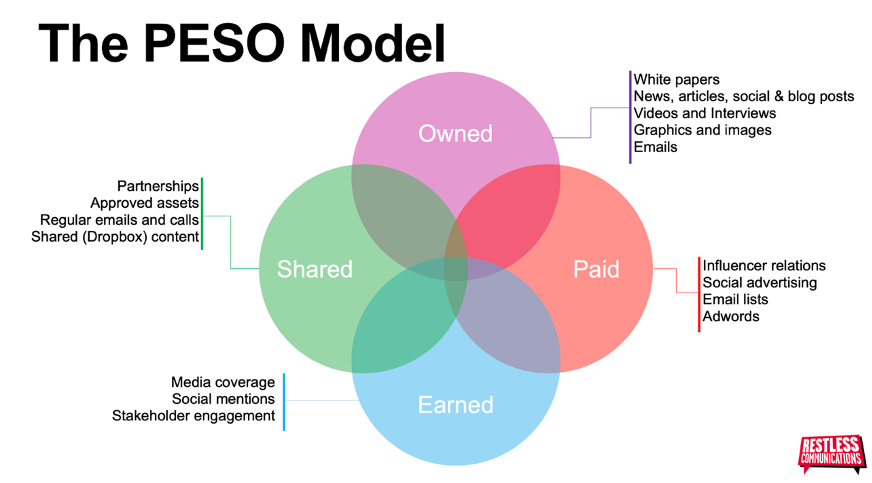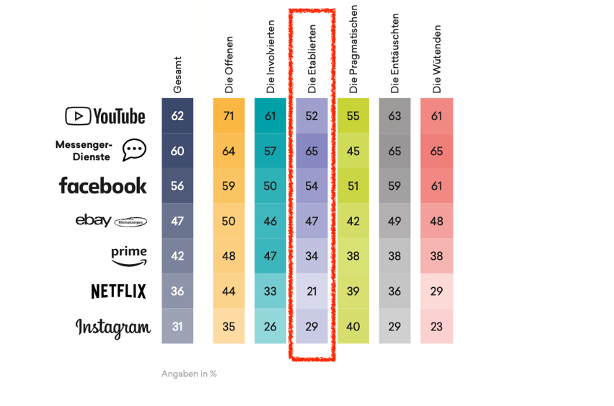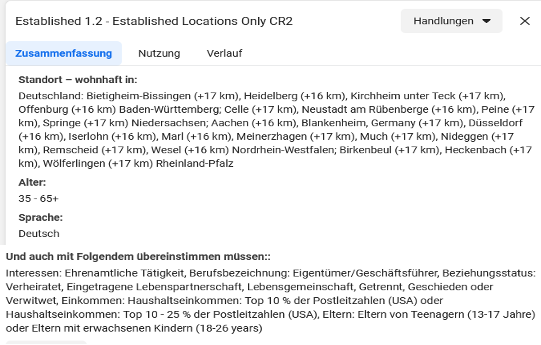Chapter 6-1 The social media strategy for the #KommMit Pilot
A social media approach was a key part of the pilot for a number of reasons: firstly, it enabled the #KommMit team to define and reach the specific target audience with accuracy; it provides the in-depth feedback data needed for the evaluation; and is a platform that holds significant potential for scaling up the #KommMit project in the future to achieve the ambituous strategic communications aim of creating “surround sound, volume and velocity”1
on these stories.
Through detailing the #KommMit social media work in this chapter, you will gain insight into:
- the key elements of the social media strategy;
- the process of developing the strategy including content type and platform choice, audience profile building, content and message development, copywriting, testing and team management.
Throughout the chapter, we provide checklists to help you reflect on social media work for narrative change and to support you to get started in this area of the work.
6.1 Overview of the social media strategy
- By disseminating value-orientated, social cohesion stories on a small scale, show that activists can address and positively change attitudes of the target group – ‘The Established’ - towards Muslims, people perceived as Muslim and towards Islam. These attitudes should be expanded to include constructive reflections, new horizons and undermine their widespread negative triggers (e.g. the assumption that being Muslim automatically means being a foreigner).
Hence, the main idea behind the approach was proving that the #KommMit pilot could reach and engage the target segment and move attitudes positively around core attitudes to Muslims, migration and integration. A social media-based approach was key for this pilot in order to get the data needed to prove the case in a cost-effective way.
Using paid ads was the only way to effectively reach the target audience of ‘The Established’ middle group as they are not natural supporters of the CSOs in the coalition running the pilot and maybe more importantly, social media companies have retooled their algorithms to drive more paid advertising business which in effect, makes organic reach a less viable option2 . Moreover, organic posts would not provide the detailed analytical data we needed to understand if the defined evaluation targets were achieved (See table 2 in Chapter 3). Paid ads on Facebook do provide this extensive data, through the Ad Manager platform3 .
This expansion strategy also has a number of practical elements. Firstly, collecting in-depth and positive evaluation evidence of the pilot project was an important starting point to convince others to come on board and this has been achieved, as detailed in Chapter 3. In addition, the working group identified two more targets in the initial set of goals for the pilot:
- Prove that such social media dissemination is cost-effective and realisable for activists with limited social media capacity;
- Prove that the storytelling approach is effective with low production costs.
6.2. Deciding on content using the PESO model
Restless Communications introduced the team to the PESO model, which we found very helpful as a bridge into the consideration of a targeted and feasible social media strategy for the #KommMit pilot. As illustrated in the diagram below, the PESO model helps advocates to focus on answering key questions on the balance of the types of content you are planning to produce in a social media campaign between Paid, Earned, Shared and Owned.

Figure 23: Designing content types for a social media campaign with the PESO model4
The following table explains each of the elements in simple terms and also the decisions made for the #KommMit pilot:
| Explanation | #KommMit pilot | |
| 1. Owned | The main content which is the foundation and drives a campaign | Campaign website, protagonist story pages, videos, logo, hashtags |
| 2. Earned | The coverage/response from unpaid people reacting to the campaign, e.g. media articles about a campaign | This was not a focus for #KommMit, as the partnership mobilisation work was not part of this pilot stage. This could be incorporated as part of scaling up in the future. |
| 3. Shared | Campaign content that can be used by partners as part of a campaign, e.g. campaign kits | This idea of shared content was built into the project website by designing it to easily add further stories from future partners. In addition, with the focus on expanding the partner base to tell more stories in the future, this toolbox is another element of shared content designed to bring others on board to allow them to use the approach and/or learn lessons. |
| 4. Paid | The advertising that is paid for through social media ads, billboards and/or influencer promotion | This approach was key to the pilot with ads and copy developed to promote the five Ayoub videos through Facebook Ad Manager. |
Table 13: The elements of the PESO model in the #KommMit Pilot
Using the PESO model as a guide, consider the following questions:
- Which content types have you most experience with in your social media work – paid, earned, shared, or organic? Have you used the PESO model before?
- What is your experience with paid ads on social media? Could this method be effective in reaching your middle target audience?
- What is your experience with earned content? Do you have the partnerships in place to make it happen (for example, with journalists and influencers)?
- What is your experience with producing shared material for partners to use in coalition campaigns?
6.3. Choosing the platform for the pilot
One of the key questions that narrative change campaigners often ask is where they can best meet and engage those in the movable middle. In 2021, More in Common conducted a study focused on answering exactly this question for the various segments in Germany, and also identified where to reach them on various social media platforms5 .

Figure 24: Digital platform usage by segment (adapted from More in Common 2021)
As evident in Figure 3, the platform most used by ‘The Established’ is messenger apps such as WhatsApp, but we were strongly advised by a German social media expert against using paid ads on such platforms as the German public do not react favourably to such advertising. Given this is a significantly older age demographic, the next most popular is Facebook and using the Facebook ad platform also automatically means that ads are also posted on Instagram. So, given the popularity of the platform with ‘The Established’ and the built-in added reach provided automatically to Instagram, the working group decided to run the #KommMit pilot on Facebook.
A last consideration was the level of existing social media capacity in the CLAIM network and hence, how easy the KommMit pilot approach would be to adopt. Facebook is a platform that many CSOs already use, so little additional capacity building is needed. This is not the case with YouTube and seasoned social media practitioners also shared how challenging it is to run ads on YouTube. So, given the #KommMit long-term target of easy replication by CSO communications groups, we took that advice and the team decided against YouTube as a platform.
- Which social media platforms do you have most experience with?
- From your experience, what are the challenges and advantages of each?
- Can you imagine running ads on Facebook and Instagram to target middle segments such as ‘The Established’?
- Do you have the capacity to develop and run ads on these platforms?
6.4. Building an audience profile of ‘The Established’
Building an audience profile that ensures you effectively reach your target segment is a mixture of art, science and experimentation, and it is worth getting advice and spending time on it. Digital campaigners in our network have reported trying to do something quickly in putting together an audience profile and ended up reaching the wrong group of the public, which inadvertently triggered a lot of negative feedback on their content. The good news is that once you have invested in building an audience profile for specific segments, you can continue to use it with smaller updates and adjustments. In this spirit, we are sharing the audience profile built to engage ‘The Established’, as a resource in this toolbox.
According to Facebook, to effectively build an audience profile for a particular group, you need to have a good knowledge of their demographics, likes and lifestyle choices. The profiles of the segments developed by More in Common provide information about many aspects of these elements useful for profile building6
. Luckily, as ICPA had worked with a previous coalition in Germany that had also targeted ‘The Established’, we were able to start from their audience profile. The #KommMit team then updated it and targeted it for the locations and regions chosen to focus on.
To give the pilot results more depth and more specifically target the material and audience profile, we started from a demographic analysis that identified the areas of highest concentration of those in ‘The Established’ segment in Germany. On this basis, the team chose to focus the pilot on two regions: North Rhine-Westphalia and Baden-Württemberg. This does not mean there are no people from ‘The Established’ in other parts of Germany, but there were significant advantages to choosing these locations: we could move away from generic stories for the pilot and think of small communities in those regions; and this concentration very much increased the chances of reaching the specific target audience in high numbers. Obviously, the downside of such an approach entails losing the specific insights that might make other versions of these stories work, for example, in more eastern regions of the country. Nevertheless, the team considered this a worthwhile trade-off for the #KommMit pilot.
One thing worth noting is that with GDPR and evolving concerns around micro-targeting during elections, the data that can be used to target specific audiences keeps changing on Facebook. For example, when ‘The Established’ profile was originally built for a previous campaign in 2021, you could choose the specific political parties that an audience might follow as part of the profile. In 2023, this was no longer possible. At this point, the working group needed to think of proxies that also might be useful for the profile and decided to add an interest in associations (e.V.) as something focused on social bonding which this segment is interested in and somewhat overlaps with their centrist political make up. These kinds of conversations and decisions are at the heart of the audience building and adaptation process.

Figure 25: Screen shot of the audience profile used in the #KommMit social media pilot
- The Facebook Audience profile built for the #KommMit pilot to reach ‘The Established’ segment in North Rhine-Westphalia and Baden-Württemberg.
Review the audience profile for the #KommMit and consider the following questions:
- Have you experience with either building or using audience profiles to target ads for your social media work?
- If not, would producing such an audience profile support your social media work?
- Can you outline in detail the demographic profile, pages/sites they follow, and common lifestyle choices for one of your target audiences?
- Who on your team has capacity and experience to do this?
<-- Chapter 5-3 | Chapter 6-2 -->
- 1Frank Sharry, America’s Voice
- 2E.g. Business.com (2024) The Survival Guide to the Decline of Facebook’s Organic Reach.
- 3 Facebook Ads Manager.
- 4Diagram shared in workshop by Restless Communications.
- 5More in Common (2021) Begegnung und Zusammenhalt: Wo und wie Zivilgesellschaft wirken kann.
- 6See profiles on p. 37 in More in Common (2021) Zusammenhalt in der Einwanderungs-gesellschaft: Wie die sechs gesellschaftlichen Typen über Migration denken.